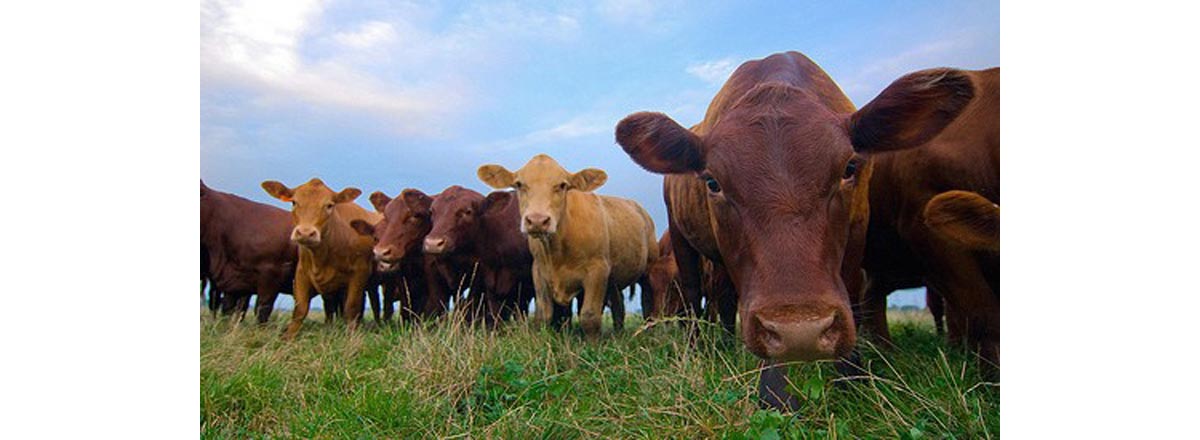Table of Contents
If we're honest about it, butchering animals so we can eat them is, well, icky. Those E. coli bacteria we're always hearing about get there from animal feces that somehow finds its way onto meat. And you don't really want to know where the Salmonella come from. (The feces in which they are harbored isn't from farm animals.)

But if you can get past the visual images of bacterial contamination, then there are some simple steps you can take to make sure the meat you eat is safe.
1. Buy organic-certified meat.
Bacteria don't become antibiotic-resistant if they aren't exposed to antibiotics. Meat from animals that are raised without antibiotics in their feed typically won't harbor antibiotic-resistant bacteria. In the extremely unlikely event you contracted an infection from organic-certified meat, your doctor will be able to find a drug to treat it.
It's not impossible for a microbiologist to identify some strains of antibiotic-resistant bacteria even in organic meat. A study of organically produced chicken parts by researchers from the University of Maryland School of Public Health, for instance, found 10% of organic chicken samples contained strains of Enteroccocus faecalis that are resistant to at least one antibiotic and 17% of organic chicken samples contained strains of Enterococcus faecium that are are resistant to at least one antibiotic (compared to 42% and 87% of conventionally raised chicken, respectively).
2. Buy fresh meat that has been put in the refrigerator case the same day you buy it, and cook or freeze it within two days of purchase.
Bacteria don't just become resistant to antibiotics. They also become resistant to disinfectants that are used in meat packing plants. A study conducted at Texas A&M University found that the single chemical most likely to cause disinfectant resistance is a product known as OdoBan, which is used to cover up odors of decaying meat. If you don't want to buy meat that carries bacteria that are resistant to the disinfectants you use in your own kitchen, buy from local companies that specialize in providing fresh products.
3. Keep raw meat separate from other foods both in the refrigerator and on preparation surfaces.
Bacteria don't survive cooking, but the juices from raw meat can spread to other foods and carry bacteria with them. It's important to keep meat wrapped in plastic or paper when it is in the refrigerator. Don't put meat in the produce bin, especially not with fruit or salad greens. Wash cutting boards on which raw meat has been prepared with warm soap water before using them to prepare other foods, and wash you hands with warm, soapy water (it doesn't have to contain a chemical to kill bacteria, the water and suds are enough to remove bacteria), rinsing them under running water, every time you handle raw meat. Make sure meat is heated through with a meat thermometer.
4. Combine meat with small amounts of bitter foods.
Even if a few bacteria find their way into your food, they will be killed when they reach your stomach, if your stomach acid is strong enough. But how can you increase stomach acidity in a healthy way?
One way of increasing the production of stomach acid to levels that protect you against infection is by eating bitter foods. Eating something bitter triggers a nerve reflex that makes the stomach produce more acid. Bitter foods that increase stomach acid include quinine water, radicchio, coffee, citrus zest, endive, and pungent cheeses, eaten in small quantities.
- Beier RC, Poole TL, Brichta-Harhay DM, Anderson RC, Bischoff KM, Hernandez CA, Bono JL, Arthur TM, Nagaraja TG, Crippen TL, Sheffield CL, Nisbet DJ. Disinfectant and antibiotic susceptibility profiles of Escherichia coli O157:H7 strains from cattle carcasses, feces, and hides and ground beef from the United States. J Food Prot. 2013 Jan
- .76(1):6-17. doi: 10.4315/0362-028X.JFP-12-253.
- Zhao S, Blickenstaff K, Bodeis-Jones S, Gaines SA, Tong E, McDermott PF. Comparison of the prevalences and antimicrobial resistances of Escherichia coli isolates from different retail meats in the United States, 2002 to 2008. Appl Environ Microbiol. 2012 Mar.78(6):1701-7. doi: 10.1128/AEM.07522-11. Epub 2012 Jan 13. PMID: 2224715.
- Photo courtesy of winnstern on Flickr: www.flickr.com/photos/winnstern/2050917990
- Photo courtesy of usdagov on Flickr: www.flickr.com/photos/usdagov/6522028931


Your thoughts on this